The cost of TAPVC in India ranges from INR 625288 to 765811 (USD 7520 to USD 9210)
TAPVC surgery also called Total Anomalous Pulmonary Venous Connection is a rare case wherein the pulmonary veins abnormally drain towards the right atrium and are not able to connect to the left one. Most commonly TAPVC is an atrial septal defect that is not compatible with survival if not treated.
Soon after birth, patients with this defect are severely ill and its diagnosis in India is detected by physicians when they are able to hear heart murmurs typical in nature and they are able to detect overloaded right ventricle. TAPVC surgery success rate in India is high due to care full and swift action taken by the doctors once they decide to correct the error via surgery. The surgical repair takes place for days and weeks based on the intensity of the situation resulting in fixing to normal circulation i.e. the pulmonary veins getting back to the left atrium instead of the right one without any abnormal returns.
TAPVC surgery cost in India is the most affordable resulting in the attraction of medical tourism from all over the world. With an approximate cost of USD 5800 in India, providing various medical stability, infrastructure, and patient care at a nominal cost when compared to countries like USA and UK, the country attracts a large number of patients in need in order to get their surgery in a safe and secure manner at affordable prices. The surgery in India is performed under anesthesia and a relatively long span of recovery period wherein the patient is recommended to be in to and fro contact with the doctor even after discharge.
| City | Minimum Cost | Maximum Cost |
|---|---|---|
| Mumbai | USD 7520 | USD 9000 |
| Thane | USD 8040 | USD 9210 |
| Gurgaon | USD 7570 | USD 9060 |
| Mohali | USD 7520 | USD 9050 |
| Hyderabad | USD 8150 | USD 9020 |
| Greater Noida | USD 8030 | USD 9070 |
| Noida | USD 7590 | USD 8850 |
| Kochi | USD 7900 | USD 9320 |
| Bengaluru | USD 7530 | USD 8960 |
Treatment cost
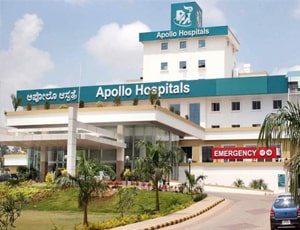
Types of TAPVC in Apollo Hospitals Bannerghatta and its associated cost
| Treatment Option | Approximate Cost Range (USD) | Approximate Cost Range (INR) |
|---|---|---|
| TAPVC (overall) | 8303 - 11071 | 707902 - 939393 |
| Intracardiac Repair | 8814 - 12586 | 741627 - 998709 |
| Extracardiac Repair | 8871 - 11597 | 712709 - 987814 |
| Partial Anomalous Pulmonary Venous Connection (PAPVC) Repair | 8447 - 11223 | 697157 - 930078 |
| Mixed or Complex TAPVC Repair | 9627 - 13115 | 778003 - 1082681 |
DOCTORS IN 13 SPECIALITIES
FACILITIES & AMENITIES

Types of TAPVC in Fortis Hospital and its associated cost
| Treatment Option | Approximate Cost Range (USD) | Approximate Cost Range (INR) |
|---|---|---|
| TAPVC (overall) | 7606 - 10157 | 625596 - 829424 |
| Intracardiac Repair | 8139 - 11169 | 663159 - 919580 |
| Extracardiac Repair | 7942 - 10681 | 651113 - 874699 |
| Partial Anomalous Pulmonary Venous Connection (PAPVC) Repair | 7746 - 10188 | 635215 - 830539 |
| Mixed or Complex TAPVC Repair | 8636 - 11631 | 705385 - 952466 |
DOCTORS IN 12 SPECIALITIES
FACILITIES & AMENITIES

Types of TAPVC in Sarvodaya Hospital and Research Centre and its associated cost
| Treatment Option | Approximate Cost Range (USD) | Approximate Cost Range (INR) |
|---|---|---|
| TAPVC (overall) | 7640 - 10122 | 626483 - 833647 |
| Intracardiac Repair | 8086 - 11141 | 667165 - 913825 |
| Extracardiac Repair | 7950 - 10660 | 648888 - 873530 |
| Partial Anomalous Pulmonary Venous Connection (PAPVC) Repair | 7715 - 10151 | 632361 - 828593 |
| Mixed or Complex TAPVC Repair | 8611 - 11715 | 705250 - 957277 |
DOCTORS IN 14 SPECIALITIES
FACILITIES & AMENITIES

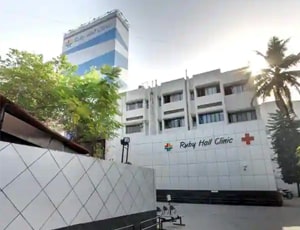
Types of TAPVC in Ruby Hall Clinic and its associated cost
| Treatment Option | Approximate Cost Range (USD) | Approximate Cost Range (INR) |
|---|---|---|
| TAPVC (overall) | 7008 - 9380 | 577069 - 771934 |
| Intracardiac Repair | 7506 - 10213 | 610947 - 856028 |
| Extracardiac Repair | 7369 - 9855 | 596798 - 798531 |
| Partial Anomalous Pulmonary Venous Connection (PAPVC) Repair | 6997 - 9395 | 579922 - 764110 |
| Mixed or Complex TAPVC Repair | 7820 - 10684 | 642230 - 869373 |
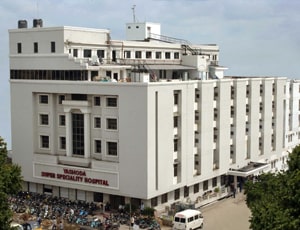
Types of TAPVC in Yashoda Hospital, Malakpet and its associated cost
| Treatment Option | Approximate Cost Range (USD) | Approximate Cost Range (INR) |
|---|---|---|
| TAPVC (overall) | 7613 - 10114 | 627385 - 829692 |
| Intracardiac Repair | 8119 - 11180 | 665425 - 911303 |
| Extracardiac Repair | 7881 - 10622 | 646629 - 874546 |
| Partial Anomalous Pulmonary Venous Connection (PAPVC) Repair | 7721 - 10199 | 633021 - 828697 |
| Mixed or Complex TAPVC Repair | 8602 - 11693 | 704238 - 960431 |
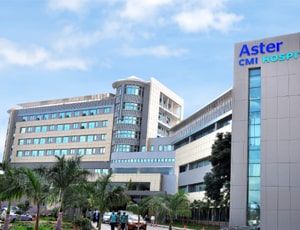
Types of TAPVC in Aster CMI Hospital and its associated cost
| Treatment Option | Approximate Cost Range (USD) | Approximate Cost Range (INR) |
|---|---|---|
| TAPVC (overall) | 7616 - 10198 | 628779 - 828552 |
| Intracardiac Repair | 8087 - 11162 | 666092 - 919302 |
| Extracardiac Repair | 7918 - 10661 | 651963 - 877021 |
| Partial Anomalous Pulmonary Venous Connection (PAPVC) Repair | 7700 - 10127 | 631401 - 832974 |
| Mixed or Complex TAPVC Repair | 8643 - 11715 | 710224 - 953999 |
DOCTORS IN 13 SPECIALITIES
FACILITIES & AMENITIES
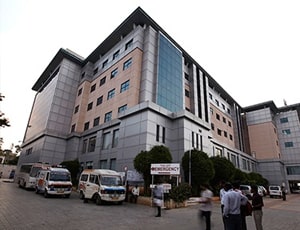
Types of TAPVC in BGS Gleneagles Global Hospitals and its associated cost
| Treatment Option | Approximate Cost Range (USD) | Approximate Cost Range (INR) |
|---|---|---|
| TAPVC (overall) | 8429 - 11178 | 685686 - 908211 |
| Intracardiac Repair | 9137 - 12592 | 744417 - 1001660 |
| Extracardiac Repair | 8965 - 11728 | 719424 - 953656 |
| Partial Anomalous Pulmonary Venous Connection (PAPVC) Repair | 8523 - 11355 | 696397 - 914484 |
| Mixed or Complex TAPVC Repair | 9764 - 12676 | 787627 - 1063453 |
DOCTORS IN 14 SPECIALITIES
FACILITIES & AMENITIES
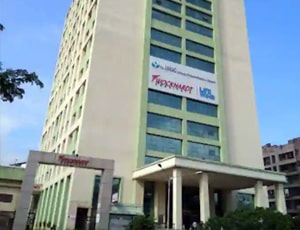
Types of TAPVC in Wockhardt Hospital, Umrao and its associated cost
| Treatment Option | Approximate Cost Range (USD) | Approximate Cost Range (INR) |
|---|---|---|
| TAPVC (overall) | 7657 - 10121 | 624710 - 831541 |
| Intracardiac Repair | 8099 - 11161 | 664940 - 914213 |
| Extracardiac Repair | 7949 - 10682 | 649248 - 870935 |
| Partial Anomalous Pulmonary Venous Connection (PAPVC) Repair | 7705 - 10150 | 634806 - 835878 |
| Mixed or Complex TAPVC Repair | 8652 - 11707 | 710532 - 953221 |
DOCTORS IN 13 SPECIALITIES
FACILITIES & AMENITIES
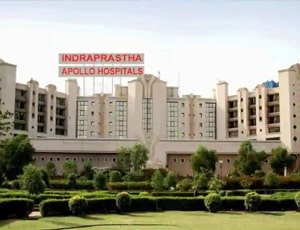
Types of TAPVC in Indraprastha Apollo Hospital and its associated cost
| Treatment Option | Approximate Cost Range (USD) | Approximate Cost Range (INR) |
|---|---|---|
| TAPVC (overall) | 8473 - 11307 | 702144 - 921968 |
| Intracardiac Repair | 9042 - 12122 | 736192 - 993394 |
| Extracardiac Repair | 8657 - 12015 | 704962 - 961184 |
| Partial Anomalous Pulmonary Venous Connection (PAPVC) Repair | 8586 - 11147 | 713760 - 937442 |
| Mixed or Complex TAPVC Repair | 9548 - 13109 | 779315 - 1051542 |
DOCTORS IN 14 SPECIALITIES
FACILITIES & AMENITIES
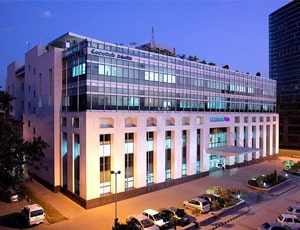
Types of TAPVC in Manipal Hospital, Yeshwantpur and its associated cost
| Treatment Option | Approximate Cost Range (USD) | Approximate Cost Range (INR) |
|---|---|---|
| TAPVC (overall) | 8600 - 11113 | 687997 - 928110 |
| Intracardiac Repair | 8855 - 12584 | 753132 - 1009349 |
| Extracardiac Repair | 8735 - 11854 | 732833 - 965548 |
| Partial Anomalous Pulmonary Venous Connection (PAPVC) Repair | 8418 - 11084 | 704243 - 913346 |
| Mixed or Complex TAPVC Repair | 9478 - 13157 | 776523 - 1059855 |

Types of TAPVC in VPS Lakeshore Hospital and its associated cost
| Treatment Option | Approximate Cost Range (USD) | Approximate Cost Range (INR) |
|---|---|---|
| TAPVC (overall) | 7651 - 10160 | 623343 - 835326 |
| Intracardiac Repair | 8093 - 11134 | 663748 - 917453 |
| Extracardiac Repair | 7914 - 10608 | 648684 - 876619 |
| Partial Anomalous Pulmonary Venous Connection (PAPVC) Repair | 7703 - 10139 | 634880 - 828990 |
| Mixed or Complex TAPVC Repair | 8609 - 11632 | 710539 - 958620 |
DOCTORS IN 13 SPECIALITIES
FACILITIES & AMENITIES
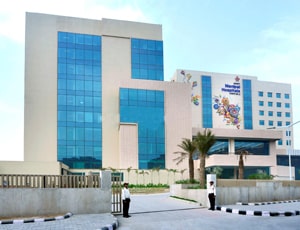
Types of TAPVC in Manipal Hospital, Dwarka and its associated cost
| Treatment Option | Approximate Cost Range (USD) | Approximate Cost Range (INR) |
|---|---|---|
| TAPVC (overall) | 7670 - 10166 | 626007 - 829264 |
| Intracardiac Repair | 8109 - 11191 | 666609 - 919479 |
| Extracardiac Repair | 7949 - 10676 | 646304 - 874916 |
| Partial Anomalous Pulmonary Venous Connection (PAPVC) Repair | 7712 - 10111 | 632604 - 829991 |
| Mixed or Complex TAPVC Repair | 8646 - 11669 | 704028 - 952648 |
DOCTORS IN 13 SPECIALITIES
FACILITIES & AMENITIES

Types of TAPVC in Dr. Rela Institute and Medical Centre and its associated cost
| Treatment Option | Approximate Cost Range (USD) | Approximate Cost Range (INR) |
|---|---|---|
| TAPVC (overall) | 8555 - 11137 | 691225 - 902457 |
| Intracardiac Repair | 8894 - 12204 | 732534 - 1019590 |
| Extracardiac Repair | 8915 - 11787 | 723631 - 982187 |
| Partial Anomalous Pulmonary Venous Connection (PAPVC) Repair | 8732 - 11183 | 700699 - 927255 |
| Mixed or Complex TAPVC Repair | 9430 - 12720 | 781419 - 1056371 |
SPECIALITIES
FACILITIES & AMENITIES
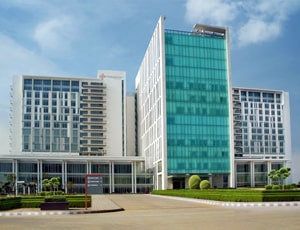
Types of TAPVC in Medanta - The Medicity and its associated cost
| Treatment Option | Approximate Cost Range (USD) | Approximate Cost Range (INR) |
|---|---|---|
| TAPVC (overall) | 8580 - 11294 | 690022 - 923968 |
| Intracardiac Repair | 8966 - 12524 | 740676 - 998623 |
| Extracardiac Repair | 8832 - 11812 | 724870 - 956177 |
| Partial Anomalous Pulmonary Venous Connection (PAPVC) Repair | 8587 - 11195 | 690760 - 922201 |
| Mixed or Complex TAPVC Repair | 9550 - 12906 | 768519 - 1064751 |
DOCTORS IN 14 SPECIALITIES
FACILITIES & AMENITIES
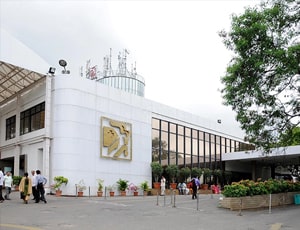
Types of TAPVC in Apollo Hospitals and its associated cost
| Treatment Option | Approximate Cost Range (USD) | Approximate Cost Range (INR) |
|---|---|---|
| TAPVC (overall) | 8346 - 11456 | 688819 - 917655 |
| Intracardiac Repair | 9048 - 12565 | 735997 - 1002467 |
| Extracardiac Repair | 8612 - 11778 | 718707 - 963372 |
| Partial Anomalous Pulmonary Venous Connection (PAPVC) Repair | 8449 - 11157 | 714885 - 931711 |
| Mixed or Complex TAPVC Repair | 9654 - 12750 | 788281 - 1044037 |
DOCTORS IN 14 SPECIALITIES
FACILITIES & AMENITIES
Total Anomalous Pulmonary Venous Connection (TAPVC) or Total Anomalous Pulmonary Venous Return (TAPVR) is a rare congenital disorder characterized by a malformation in all the four pulmonary veins that carry oxygenated blood from the lungs to the atrium. The malformation is such that the veins do not connect to the left atrium perfectly.
In case of TAPVC, the four pulmonary veins drain into the right atrium because of an anomalous connection. There are different TAPVC types, depending on where and how the pulmonary veins drain into the right atrium. The common TAPVC types include supracariac, cardiac, and infracardiac TAPVC.
All types of TAPVC are corrected with the help of a surgery, which is conducted during infancy itself. Additionally, all types of TAPVC almost always have an atrial septal defect (ASD), which requires a separated surgery for its closure. An ASD is a hole between the upper two chambers of the heart. As a result, some amount of oxygenated blood from the right atrium is transferred to the left atrium and out from the body.
TAPVC is detected as soon as the baby is born or even before. The following are some of the main TAPVC symptoms:
TAPVC repair is conducted as soon as the condition is diagnosed, which may happen during pregnancy or after the birth of the baby. However, the exact time as to when the repair is conducted depends on the overall health of the baby. During TAPVC repair, the neonatal cardiac surgeons connect the pulmonary veins to the back of the left atrium to restore the normal flow of blood to the heart. Additionally, they also close off any abnormal connection between the pulmonary veins. The TAPVC repair procedure does not end there. The last step in the repair mostly includes the closure of the ASD. Prior to the surgery, the body of the child is connected to an artificial heart-lung machine. The machine is disconnected as soon as the normal beating of the heart is restored after making doing all the corrective repairs.
TAPVC repair success rate is excellent with over 95 percent success rate in children who are treated electively. A child or an adult may undergo TAPVR surgery successfully, however, that does not mean that it is fully cured. They will have to attend follow-up appointments with the surgeon in the future on a regular basis. The success rate, on the other hand, is low when the procedure is conducted on an emergency basis in critically-ill infants. Even if infants do survive after undergoing emergency TAPVC repair procedure, they will be kept under a prolonged post-surgery intensive care. They are also put on a ventilator machine to assist breathing.
Even is the repair is successfully handled, the patient is required to attend follow-up session with the surgeon for the rest of your life. During the follow-up appointments, the surgeon will check the progress and keep a tap on health conditions that may develop as the child grows into an adult. Most of the children who undergo TAPVC repair and ASD closure are able to grow and develop normally. Abnormal cardiac rhythm and obstruction in the pulmonary veins are the two post-surgical complications that may rarely occur.
Ask your healthcare adviser for the best multiple options and choose the one that meets your expectations
The cost of TAPVC in India starts from $7000. Many multispeciality hospitals in India that are NABH, JCI certified are approved and most sought after for treating international patients with TAPVC
TAPVC package cost in India has different inclusions and exclusions. The top hospitals for TAPVC in India covers all the expenses related to the pre-surgery investigations of the candidate. Typically, the package cost of TAPVC in India includes the expenses related to the surgeon's fee, anesthesia, hospital, meals, nursing and ICU stay. Stay outside the package duration, post-operative complications and diagnosis of a new condition may further increase the TAPVC cost in India.
There are many hospitals across the country that offer TAPVC to international patients. Some of the most renowned hospitals for TAPVC in India include the following:
After TAPVC in India, the patient is supposed to stay in guest house for another 18 days. This is important to ensure that the surgery was successful. During this time, control and follow-up tests take place to check for medical fitness.
Apart from the TAPVC cost, the patient may have to pay for additional daily expenses such as for guest house after discharge and meals. The extra charges may start from USD 50 per person.
The following are some of the best cities for TAPVC in India:
Patients who are interested in availing telemedicine consultation before they travel for TAPVC in India can opt for the same. There are many TAPVC surgeons who offer video telemedicine consultation, including the following:
| Doctor | Cost | Schedule Your Appointment |
|---|---|---|
| Dr. Bikram K Mohanty | USD 35 | Schedule Now |
| Dr. Ashish Chauhan | USD 14 | Schedule Now |
| Dr. Sumit Narang | USD 14 | Schedule Now |
The average duration of stay at the hospital after TAPVC is about 3 days for proper care and monitoring. This phase is important to ensure that the patient is recovering well and is clinically stable. During this time, several tests are performed before the patient is deemed suitable for discharge.
The average rating for TAPVC hospitals in India is 3.9. This rating is automatically calculated on the basis of several parameters such as the infrastructure of the hospital, quality of services, nursing support and other services.
There are more than 51 hospitals that offer TAPVC in India. The above mentioned clinics have the required infrastructure and a dedicated unit where patients can be treated. Additionally, these hospitals are known to comply with the international standards as well as local legal requirements for the treatment of patients.
Some of the top medical specialists for TAPVC in India are: